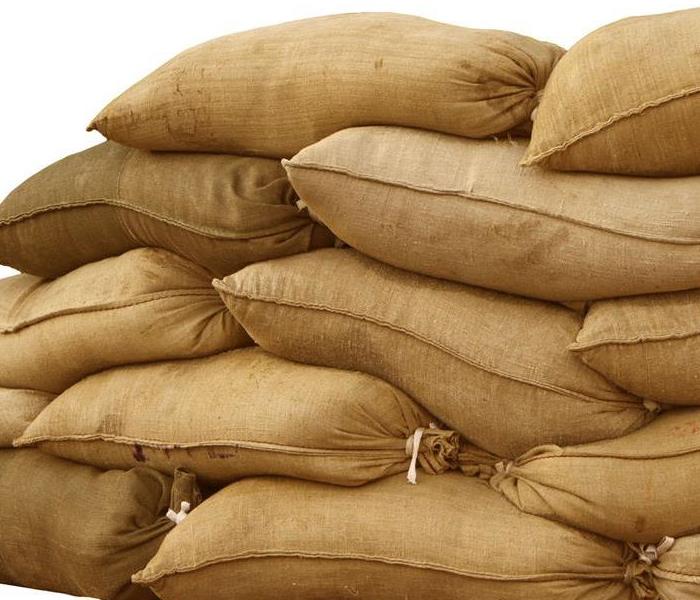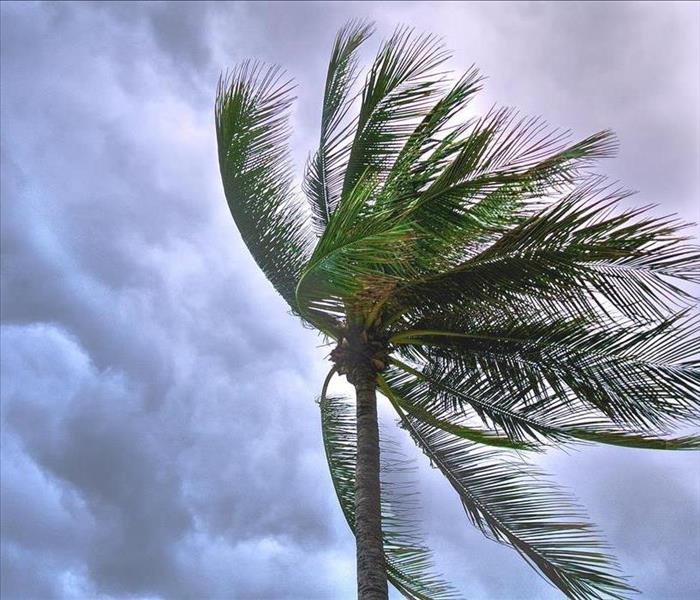Recent Storm Damage Posts
Worried about flooding during heavy rains? Sandbag! Sandbag! Sandbag!
8/18/2023 (Permalink)
Sandbagging is a technique used to create barriers and protect buildings from flooding. If you're facing a potential flood threat and want to sandbag your house, here's how you can do it:
Materials You'll Need:
- Sandbags (available at hardware stores or you can make your own with sand and suitable bags)
- Sand (for filling the bags)
- Shovels
- Plastic sheeting (to help waterproof the sandbags)
- Work gloves
- Stakes or weights (to hold the sandbags in place)
Get Sandbags: Purchase sandbags from a hardware store or contact your local emergency management agency for information on obtaining sandbags. If you can't find pre-filled bags, you can buy bags and fill them with sand.
Fill Sandbags: Fill the sandbags about half to two-thirds full with sand. Overfilled bags will be difficult to manage and won't stack properly.
Seal and Stack: Fold the open end of the sandbag and place it on the ground with the folded end facing up and the sealed end down. When stacking the bags, stagger the layers like you would in bricklaying. This creates a more stable barrier.
Form a Barrier: Place the sandbags to form a barrier around the areas vulnerable to flooding, such as doorways, windows, and low-lying parts of your property. If you're building a wall, make sure it's at least two bags wide to provide stability.
Tamp and Mold: Gently tamp down the bags in each layer to create a firm and stable barrier. Use the weight of the bags to create a tight seal.
Anchor the Barrier: Depending on the situation, you might need to anchor the sandbag barrier with stakes or other weights to prevent shifting.
Create a Slope: If the water is approaching your house, create a gentle slope with the sandbags to redirect the water away from your home.
Protect Doorways: If you're protecting doorways, consider using plastic sheeting in addition to sandbags to create a waterproof seal. Attach the plastic sheeting to the doorframe and drape it over the sandbags.
Monitor and Maintain: Regularly check the sandbags for signs of wear or displacement. Replace damaged bags promptly and adjust the barrier as needed.
How Storms Can Affect Your Residential Property in Southern California
2/24/2023 (Permalink)
Storm surge
The National Oceanic and Atmospheric Administration (NOAA) describes a storm surge as a rise in seawater level that's caused by a storm. It occurs when powerful winds from a hurricane, tropical storm or even a winter storm push ocean water ashore. This creates a rise in seawater level that's greater than the predicted tide.
A storm surge can create a dangerous situation for you and your family, so it's important to be prepared. Consider creating an evacuation plan and packing an emergency "go bag" ahead of time so you can quickly depart if a storm surge forces you to evacuate.
Regardless of what's predicted, it's important not to underestimate the potential danger of a storm surge. The NHC says storm surges can cause water levels to rise in a matter of minutes, leaving you little time to seek higher ground. Extreme flooding stemming from a storm surge can force major evacuations and may leave behind damage at your home. This damage may include foundation cracks, punctured gas lines, flooded appliances and electrical issues, says Ready.gov.
Wind
Early in the season, the high-pressure air in the Great Basin starts out warmer, so the addition of compressional heating can make for winds that feel hot like a hair dryer. Later in the season — late fall and winter — the jet stream comes farther down out of Canada and feeds much colder Arctic air into the interior West. That colder, denser air can generate stronger winds, even though they may not be as oven-hot as in the early fall. These later-season winds are more likely to have upper-level support — meaning winds higher in the troposphere may influence the winds at the surface through a sort of chain reaction. The cooler, denser air helps drive those winds aloft to the surface because of subsidence or sinking, Miller adds.
Downslope Winds?occur when warm/dry air descends rapidly down a mountain side. These are common on the east side of the Rocky Mountains, called Chinook Winds. These winds can blow over 40 mph, and can occur in sudden gusts that are even stronger, which can make driving hazardous. In addition, their dry conditions increase the risk of wildfires in the area.
Downslope Winds occur when warm/dry air descends rapidly down a mountain side. These are common on the east side of the Rocky Mountains, called Chinook Winds. These winds can blow over 40 mph, and can occur in sudden gusts that are even stronger, which can make driving hazardous. In addition, their dry conditions increase the risk of wildfires in the area.
Rain
For the first time since October, drought-plagued California was doused with heavy rain and snowfall from Dec. 12-15. Even Southern California got to join in the party, with Santa Barbara and the rest of the South Coast averaging 2 inches of rain at the water’s edge and upwards of 5 inches in the mountains. San Marcos Pass, traversed by Highway 154, received more than 8 inches of rain from the storm.
A vigorous storm system moved into the Southland on Monday, delivering much-needed rain and high-elevation snow to the drought-stricken region — along with lightning, flash floods and road hazards — but it wasn’t enough to make more than a dent in the ongoing drought.
These bands occur globally and are responsible for moving much of the water vapor that flows outside of the tropics, especially on the west coast of the U.S. and in northern Europe. When they come into contact with a landmass, atmospheric rivers will often release their vapor, resulting in rainfall and snowfall at higher elevations.
What to do when you get a warning about a storm.
Practice Your Plan: Conduct a family severe thunderstorm drill regularly so everyone knows what to do if a damaging wind or large hail is approaching. Make sure all members of your family know to go there when severe thunderstorm warnings are issued. Don't forget pets if time allows.
A storm warning indicates that meteorologists have already observed severe conditions. If you hear that a storm warning has been issued, it means potentially dangerous weather is imminent in or near your location. Depending on the type of weather warning, take appropriate action as quickly and safely as possible.
Also check your furnace and change your filter. While this won’t mitigate storm damage, it can make weathering the storm more comfortable. Also take this opportunity to service your garage door opener by lubricating the chain or screw drive and checking the tension on the chain. Change the batteries in the electronic opener, too, to minimize the chances that your loved ones will have to operate the door manually during a storm.
What to do if a storm hits.
Start by discussing what could happen and what you should do at home, at school or at work if a severe storm strikes. To be prepared, make a list of what needs to be done ahead of time. Store important family documents, such as birth certificates, passports, wills, financial documents, insurance policies, etc. in waterproof container(s). Identify an appropriate out-of-town contact that can act as a central point of contact in an emergency.
When a winter storm hits, stay indoors. If you must go outside, dress for the weather. Outer clothing should be tightly woven and water-repellent. The jacket should have a hood. Wear mittens – they are warmer than gloves – and a hat, as significant body heat is lost through the head.
After the Storm
1. Return home only when authorities say it is safe.
2. Be aware of areas where floodwaters have receded and watch out for debris. Floodwaters often erode roads and walkways.
3. Do not attempt to drive through areas that are still flooded.
4. Avoid standing water as it may be electrically charged from underground or downed power lines.
5. Photograph damage to your property for insurance purposes.
Protect Your Home from Strom Damage by Following These Steps
3/15/2022 (Permalink)
It looks like the rainy season here in Southern California is beginning. Will your house be safe during a heavy downpour? Here is what you can do to help protect your home from rainwater damage.
1. Maintain your roof. Neglecting the care of your roof could lead to some serious damage when the rain comes. Inspect your roof for damaged, missing, or loose shingles. Keep in mind that roods have a lifespan of 20-30 years.
2. Seal windows and doors. If windows and doors are not properly sealed, water can seep in through the cracks. Inspect the exterior of your home for any cracks. They can be sealed with caulking or with sprayable insulating foam.
3. Maintain your homes's exterior finish. Water may be able to enter your home through holes in your exterior walls, resulting in mold, peeling paint, or discoloration. Repaint and repair exterior areas as needed.
4. Ensure proper drainage. If water isn't properly diverted away from the home, the foundation could possibly be at risk. Make sure that there is no standing water available.
5. Clean your gutters. They should be free of any debris. Blocked gutters cause the water to flow down the side of your house and collect at the base.
6. Check your downspout. Downspouts should extend to at least two or three feet from the house. If it doesn't extend far enough, then it could actually be channeling the water directly into a puddle at the base of your house.
Storm damage? Here's what to do...
12/15/2021 (Permalink)
In Southern California, the weather can be petty unpredictable. One year we are in a drought, and the next rain is falling all winter. It is important to be prepared for these types of conditions, because homes are not indestructible structures. A storm can cause serious damage to your property, and it’s best to be aware on what to do when confronted with storm damage.
Scope out the House for Hidden Damages
Water from heavy rain can seep into the nooks and crannies of your home making mold growth more likely. After a storm, look in all of the often overlooked places of your home to check for flooding and water build up. It’s important to catch this soon to prevent mold growth. If you are not sure if your home is damaged from a storm, call a disaster recovery service like SERVPRO to inspect your home for any storm damage.
Steer Clear of Affected Areas
After inspection, if your home has suffered from damaged, to keep everyone safe, keep a good proximity from the affected areas. If your property has mold damage, the mold can produce allergens that can be dangerous for humans to be around. And if water has accumulated in your home, it can affect the structural integrity of your property. Keep yourself and the occupiers of your property safe!
Call a Disaster Recovery Service
Once you are sure your property has suffered from storm damage, call a disaster recover service like SERVPRO to restore your home back to new. Here at SERVPRO, we have a 24-hour emergency service line for your property’s restoration needs any time of day. We have over 50 years of experience in disaster recovery, so you can trust us to make your home “Like it never even happened.”
Fast Response Time is Imperative in Damage Situations
11/17/2021 (Permalink)
As a regular home/property owner, it is important to know how to deal with potentially damaging situations. Certain procedures must be taken to ensure that your property remains safe and beautiful.
If confronted with, for example, water damage from a flood in your kitchen, you must act quickly to dry the area completely to prevent the growth of mold which is another pressing situation. Or even if a small fire in the kitchen burns a portion of the wall, that area now has weaker structural integrity. In the case of an earthquake, seldom but more likely in California, a collapse in the damaged portion of the kitchen is more likely to occur. Unfortunately, initial damage can lead to more if not tended to as soon as possible.
In these times, acting quickly may not be in your budget, as these situations are usually unexpected. At SERVPRO, we understand this and provide the best price for the work done to make it “Like it never even happened.” To provide you with a resource to respond quickly, call our SERVPRO of Torrance emergency service line at (949)429-3188.
To know more about the specifics of different types and categories of damage, check out our blog page. There you can find what steps to take if your property suffers from a fire, to design tips for your new family home! We are here to help with all things regarding property maintenance and restoration.
Water v. Flood Damage, There's a Difference
11/2/2021 (Permalink)
According to insurance adjusters that determine the degree of damage your property has suffered from and what cost accompanies it, flood damage and water damage fall under different categories. The main differentiator is the source of water that caused damage to the property in question. Water damage is categorized by moisture that originated from inside of the property, from the pipes that back the running water outlets. Flood damage is for water that comes from a natural source like mudslides, accumulated rain runoff, and overflow of tidal waters. Flood damage also includes two or more properties. Flood damage is often a heavier burden to mitigate which is why insurance adjusters follow varying procedures between the two types of damage.
It is useful to know that flood damage is not covered by your home insurance, only water damage is. Southern California properties are much less likely to suffer from flood damage than that of other regions of the state, but the disaster is still not far from possible. Areas vulnerable to flooding are near beaches, or the mudslide prone foothills, it’d be in your favor to discuss adding flood insurance to your property’s plan. This can be done at www.floodsmart.gov.
Here at SERVPRO it is in our best interest to keep you updated and informed about how you can best prepare for natural disaster damage. For more information, give us a call at (949)429-3188.
Steps to Take After a Heavy Storm
10/20/2021 (Permalink)
While Southern California isn't necessarily known for its rainy season, we have gotten a couple heavy storms within the past several years. Powerful storms can dump inches, sometimes even feet of water into your property, and can overwhelm your home even if you've properly waterproofed it.
Following a storm, here is what you can do to check for any possible water intrusion into the home:
- Check your crawlspace- excess water from heavy rain can infiltrate any cracks or weak points in your home's foundation. It is important to dry up the water as quickly as possible. If you are unable to remove the water, a specialist such as SERVPRO can assist.
- Check your flooring- water can seep through unsealed windows or pool under doorways, potentially soaking your carpet or wood flooring. If you find your carpet is wet, pull it up and remove any wet padding as that isn't salvageable. Wood/laminate floors soak up moisture, resulting in possible warping or damage that may require the flooring to be replaced. Try to mop up any standing water and open doors and windows for plenty of ventilation. If problems still arise, it would be a good time to contact a water restoration company.
- Inspect the attic- potential roof leaks can result in damage to the insulation and framing. Finished attics will have the same water damage issues as the rest of the home. Remove any wet materials if possible.
- Examine the walls- check the walls for stains or discoloration and bubbling or peeling paint. Sometimes baseboards will be swollen too. There could be a potential leak that a professional may need to inspect. Most of the time, wet drywall will need to be removed or replaced.
- Check your gutters and downspouts- standing water is your foundation's worst enemy. Check your gutters and make sure that they are clear of debris and that the openings to all downspouts are clear. Make sure that the water coming from the downspouts is directed away from the home and is not pooling at the base of the structure.
Check Your Gutters Before Storm Season
8/2/2021 (Permalink)
Gutters are an easy thing to forget about, and they seem to only be remembered in the middle of a storm. Storms can do some powerful damage to your property as far as water goes (trust me, water goes pretty far). If your gutters happen to be clogged in the middle of a storm, there can be some hefty destruction.
When the gutters become clogged, all the water from a storm will run off the roof. Instead of being routed through the gutter’s drainage system, all the water flows off to the side of the home/property. If you’re unaware that the gutters are clogged, this can lead to water spilling and then sitting all along the sides of your property, which can lead to issues such as water and foundation damage.
It’s mostly recommended to clean out your gutters twice a year; once in the spring and once in the fall. We say mostly, mostly because different areas have different climates. For example, an area with a lot of trees could require you to clean your gutters more often. A more desert landscaped area could get by with the recommended two cleanings.
In the event that your gutters do clog during a storm and property has been damaged, you can call SERVPRO 24/7 to get repair underway. SERVPRO of Lake Foret South / Laguna Woods is available at any time to make it “Like it never even happened.”
Storm damage to a home
2/6/2020 (Permalink)
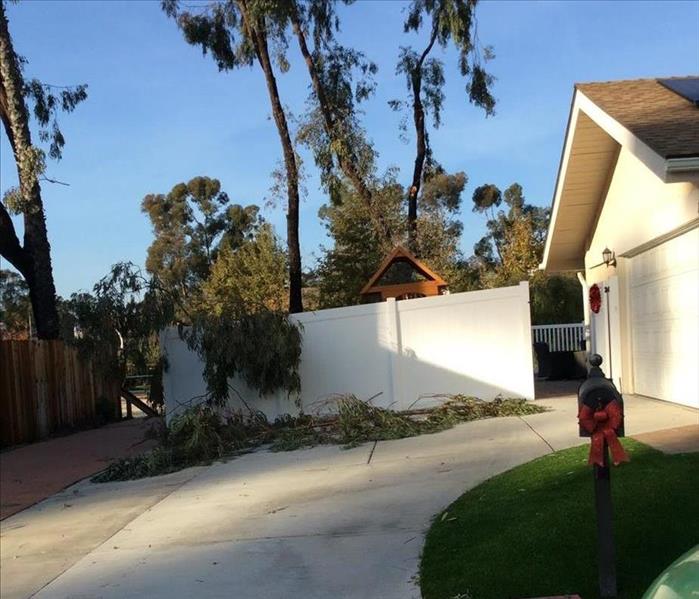 Home after a storm damage.
Home after a storm damage.
Storm damage can occur at any time and can cause an immense amount of harm to your home. Heavy rains can cause flooding and powerful winds can cause roof damage and downed trees on your property.
What should you do if a storm is damaged?
Staying Safe After a Storm
Do not venture outside until it has been declared safe to do so. Stay away from downed power lines and avoid standing water or metal objects near downed wires. Leave and do not enter buildings that have sustained structural damage. Stay away from damaged trees and dangling or broken limbs.
Here at SERVPRO of lake Forest South\Laguna Woods We are ready for any size of disaster big or small. Any questions you may have give a call at (949)-429-3188 always with a smile to help.
How do I prepare my house for a storm?
2/6/2020 (Permalink)
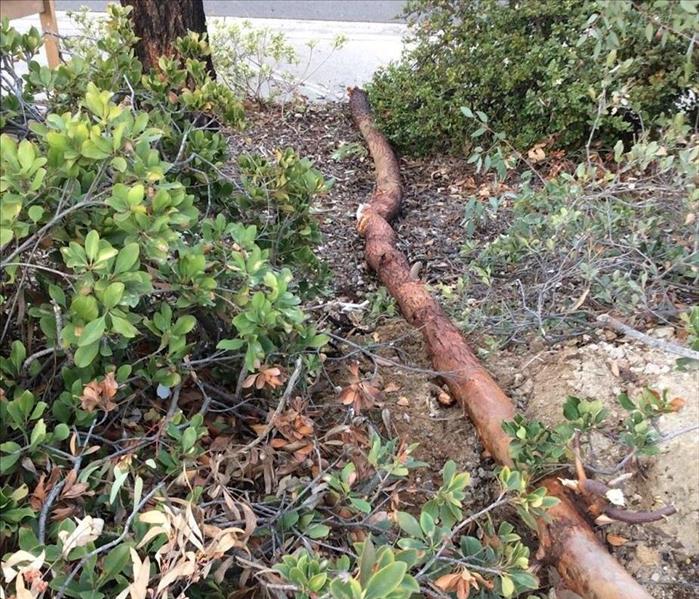 Tree felt after a storm damage.
Tree felt after a storm damage.
What do you do in a storm at home?
Ensure you do the following during a severe storm:
- Stay indoors and away from windows.
- If outdoors, shelter away from drains, gutters, creeks and waterways.
- Be prepared for power outages.
- Floodwater is dangerous – never drive, walk or ride through floodwater.
- Floodwater is toxic – never play or swim in floodwater.
How to Prepare Your Home for a Storm
Clear limbs and trim trees. During a storm, dead tree limbs can get loose and cause damage to a home's exterior or even puncture a window
Secure fences
Secure furniture
Check gutters
Protect the critical areas
Protect your valuables
Stock a basic emergency kit
Create a family emergency plan
Just remember SERVPRO of Lake Forest/Laguna Woods its here 24 hours at day to serve you at any time. Call us at (949) 429-3188 here to help “Like it Never Even Happened”
Signs of a storm coming
2/6/2020 (Permalink)
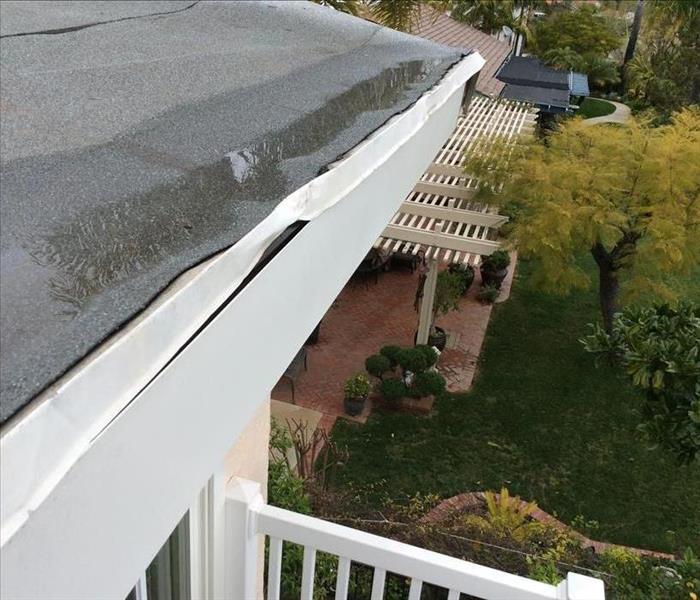 After the rain storm.
After the rain storm.
How do you sign storm?
- A drop in temperature. Pay close attention to the temperature levels outside.
- Large, billowy clouds. Large, billowy clouds that continue to grow as the day heats up are known as cumulus clouds.
- A drop in atmospheric pressure
- Darkening of the clouds
- A weather program predicts it
Why do storms happen?
Why are there thunderstorms? Thunderstorms are a great way for the atmosphere to release energy. When warm moist air meets colder drier air, the warm air rises, the water vapor condenses in the air, and forms a cloud. As the water vapor condenses it releases heat, which is a form of energy.
Does a storm clear the air?
Thunderstorms along a cold front “clear the air” because the wind turns to the west or north-west behind them and that circulation is, if not cooler, usually much drier or less humid. Rain also washes dust particles from the sky.
Nature of storms
2/6/2020 (Permalink)
 storms can be scary but also a great help.
storms can be scary but also a great help.
What are the benefits of storms?
So, even though thunderstorms are dangerous, they can be a great help. They give summer water, cool the earth, and clean the air. Lightning balances the earth's electricity and helps fertilize the soil.
How does rain help the environment?
Rainwater systems counteract storm water run-off and thereby reduce flooding, erosion, and ground water contamination. Taking water out of our lakes, reservoirs, and rivers also affects ground water. On the other hand, irrigating with rainwater helps replenish groundwater supplies.
Are thunderstorms good for the Earth?
Thunderstorms are a great way for the atmosphere to release energy. When warm moist air meets colder drier air, the warm air rises, the water vapor condenses in the air, and forms a cloud. Thunderstorms also help keep the Earth in electrical balance.






 24/7 Emergency Service
24/7 Emergency Service
